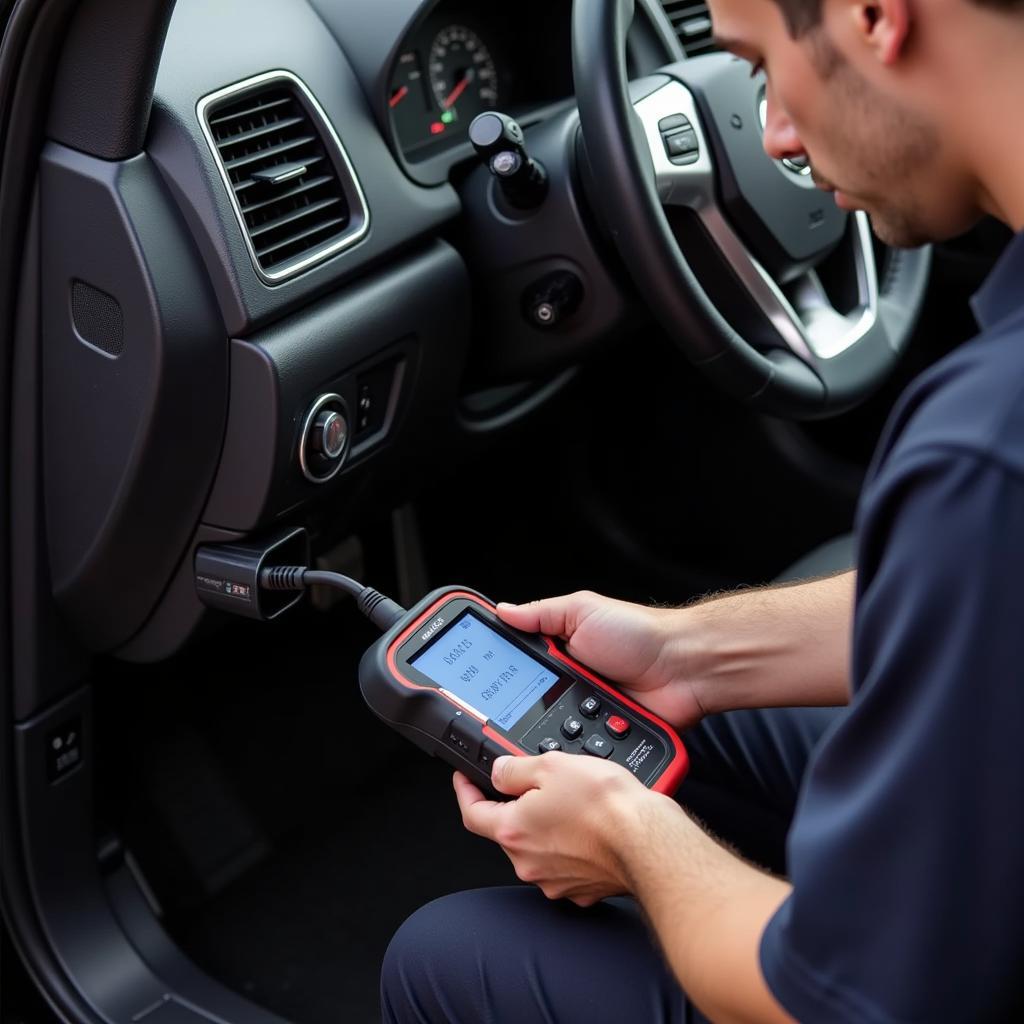A Car Eps Problem can be frustrating and potentially dangerous. This comprehensive guide dives into everything you need to know about Electronic Power Steering (EPS) issues, from diagnosis to solutions, empowering you to tackle this common car problem head-on. eps problem in car
Understanding the Car EPS System
The Electronic Power Steering (EPS) system is a crucial component in modern vehicles, providing drivers with assisted steering. Unlike traditional hydraulic power steering, EPS utilizes an electric motor to aid steering effort, improving fuel efficiency and offering variable assist levels depending on driving conditions. A malfunctioning EPS can lead to a stiff steering wheel, warning lights, and even complete loss of power steering, jeopardizing safety.
What causes a car EPS problem? Several factors can contribute, including faulty sensors, wiring issues, motor malfunctions, or even software glitches. Understanding these potential culprits is the first step towards effective troubleshooting.
Diagnosing Your Car EPS Problem
How do you diagnose a car EPS problem? Start by paying attention to warning lights on your dashboard. An illuminated EPS or power steering warning light is a clear indicator of a potential issue. You might also experience a stiff steering wheel, unusual noises from the steering column, or a change in steering feel.
Common Symptoms of a Car EPS Problem
- Stiff Steering Wheel: This is often the first noticeable symptom. Turning the steering wheel becomes significantly more difficult.
- Warning Lights: The EPS or power steering warning light on the dashboard will likely illuminate.
- Noises: Unusual whining, grinding, or clicking sounds may emanate from the steering column.
- Loss of Power Steering: In some cases, the power steering assist can fail completely, making steering extremely difficult.
Fixing a Car EPS Problem
Addressing a car EPS problem requires a systematic approach. While some fixes might be simple DIY tasks, others demand professional expertise.
Steps to Fix a Car EPS Problem
- Check the Power Steering Fluid (if applicable): While EPS systems are electric, some vehicles might have a hybrid system with a small reservoir. Check the fluid level and condition if present.
- Inspect the Wiring and Connections: Loose or damaged wiring can disrupt communication between the EPS components.
- Test the EPS Motor: A faulty motor can lead to loss of power steering assist.
- Scan for Diagnostic Trouble Codes (DTCs): Use an OBD-II scanner to retrieve any stored codes related to the EPS system. These codes can pinpoint the source of the problem.
- Consult a Professional: If you’re uncomfortable working on the electrical system, or if the problem persists, consult a qualified mechanic.
“A thorough diagnostic scan is crucial for identifying the root cause of an EPS problem,” says automotive expert, David Miller, ASE Certified Master Technician. “Guesswork can lead to unnecessary repairs and wasted time.”
how to solve eps problem in car hyundai
 Mechanic Checking Car EPS System
Mechanic Checking Car EPS System
Preventing Future Car EPS Problems
Regular maintenance can prevent many car EPS problems. Ensuring proper battery voltage, inspecting wiring for damage, and addressing any steering-related issues promptly can help keep your EPS system in good working order.
“Preventive maintenance is always the best approach,” advises Sarah Johnson, an automotive engineer with over 15 years of experience. “Addressing minor issues before they escalate can save you significant time and money in the long run.”
In conclusion, understanding your car’s EPS system and taking proactive steps to diagnose and fix any car EPS problem can ensure a safe and enjoyable driving experience. For any further assistance, connect with us at AutoTipPro at +1 (641) 206-8880 or visit our office at 500 N St Mary’s St, San Antonio, TX 78205, United States. We’re here to help you get back on the road.




Leave a Reply